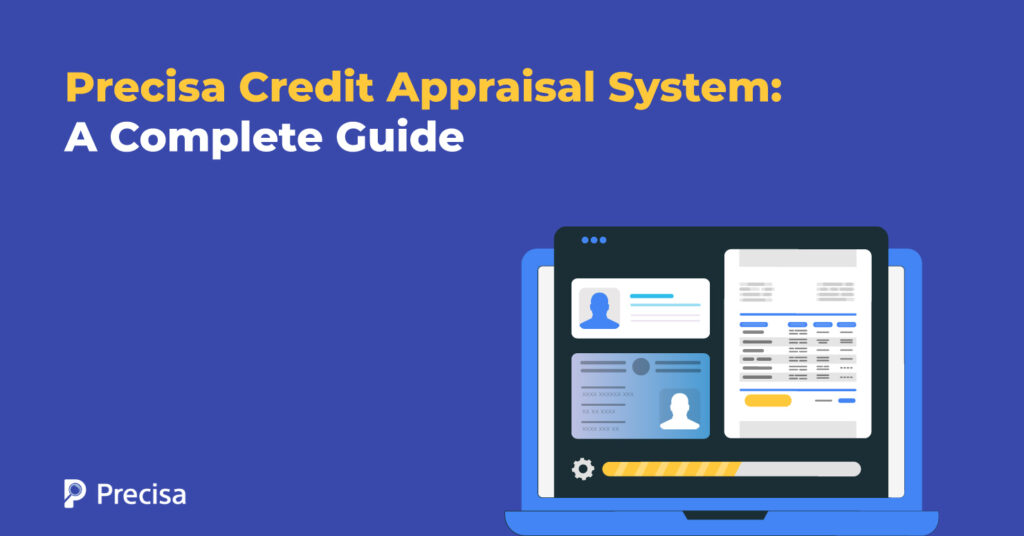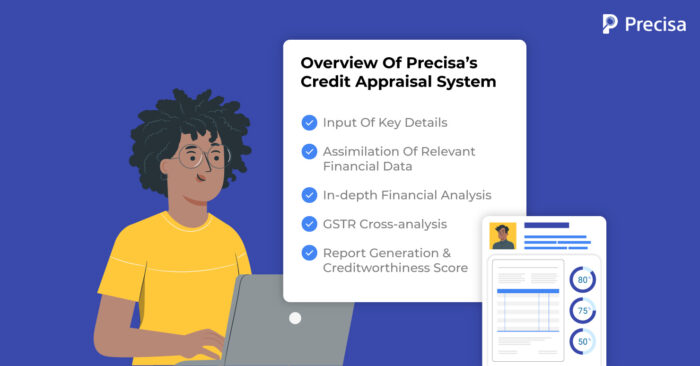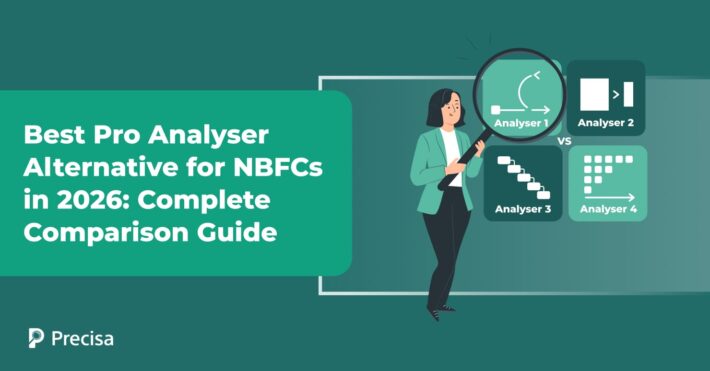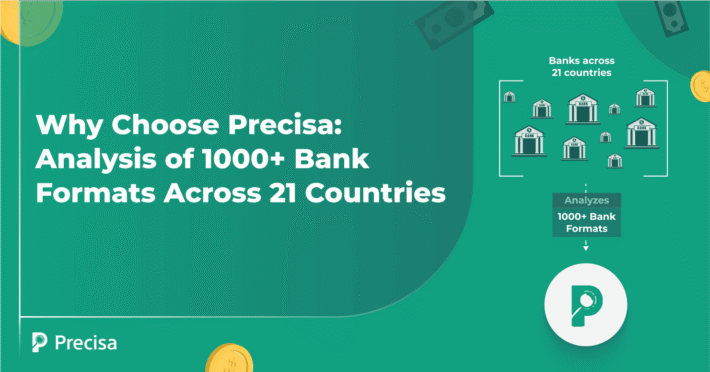Precisa Credit Appraisal System: A Complete Guide

Lenders face several challenges concerning the credit risk management process. Some of these include inadequate data quality, lack of skilled underwriting personnel, lack of data security, lack of inclusive risk assessment strategies, and poor compliance monitoring frameworks.
These multiple challenges converge into one major challenge – the inability to appraise potential borrowers’ creditworthiness accurately.
In this scenario, technological advances are now paving the way for lenders to reimagine their entire risk management strategy.
For instance, Precisa’s credit appraisal system enables lenders to adopt a data-driven, comprehensive creditworthiness evaluation process, which creates an even playing field for all borrowers. Let’s understand how it works.
What Is a Credit Appraisal System?
A credit appraisal system is a comprehensive, cloud-based, automated solution that enables lenders to effectively assess the ability of a borrower to repay a loan.
Lenders take to make underwriting decisions based on the data available. The process relies on human interventions to analyse bank statements but tends to be slow, with a higher margin for error and omissions of critical data.
Precisa’s credit appraisal system, on the other hand, leverages cloud computing, Artificial Intelligence, and Machine Learning. These technologies can study patterns in banking transactions that are invisible to the human eye.
They enable financial analysis software to deliver data-driven risk assessment results that are expedited, accurate, and reliable.
Overview of Precisa’s Credit Appraisal System
Here’s a snapshot of how Precisa’s comprehensive credit appraisal system brings more efficiency and accuracy to the process, involving the following steps:
1. Input Key Details
The first step is to include all basic details, such as the consumer’s name, date of birth, and gender, and create the member’s account. Typically, there is no manual data extraction involved.
Precisa’s superior financial analysis tool leverages Optical Character Recognition (OCR) to pull the data from relevant identity and information documents. The software also cross-references any spelling errors and inconsistencies to extract correct information.
2. Assimilate Relevant Financial Data
Once the member’s account is created, a bureau data connector helps pull a member’s credit report directly from the source. Alongside a member’s credit history, the software also assimilated bank statements, income statements, invoices, and any other relevant financial data.
For instance, if a borrower has no credit history, data from Goods & Services Tax Returns (GSTR) can be considered to cross-reference incoming bank transactions.
3. Obtain In-depth Financial Analysis
One of the most important steps of Precisa’s credit appraisal system is the structured analysis of all financial data. All banking transactions are classified into inflow and outflow over 20 to 30 sub-categories.
This step helps isolate each transaction to provide deeper insight into a consumer’s financial habits and status. For instance:
- Inflow categories include revenues, interest, capital gains, and tax refunds.
- Outflow categories include salaries, expenses, EMIs, and penalties for events such as bounced cheques.
4. Cross-analyse GSTR
A superior financial analysis software also enables a fair credit appraisal system for business borrowers with no assets or credit rating. This software comes with a unique feature that enables lenders to cross-reference bank transactions with GSTR data.
This means that lenders can authenticate the transactions claimed as revenues. Borrowers must authorise the lender to pull GSTR data directly from the government’s GST portal.
5. Report Generation & Creditworthiness Score
The outcome of the financial analysis results in an in-depth report that enables lenders to understand all aspects of a borrower, including revenues, liabilities, assets, credit history, and financial habits.
For example, too many bounced cheques, unpaid EMIs, and circular transactions raise red flags about the borrower. The report is also accompanied by a data-driven creditworthiness score called a Precisa Score. This score enables lenders to make data-driven underwriting decisions.
Positive Impacts of a Superior Credit Appraisal System
Lenders can achieve cutting-edge capabilities using Precisa’s credit appraisal system, such as:
1. Accurate Risk Assessment
Lenders can significantly enhance risk assessment capabilities. They can, in turn, reduce the number of Non-Performing Assets (NPAs) and the amount they need to spend on debt recovery costs, which eats into profitability.
2. Superior Fraud Detection Capabilities
Loan fraud can eat into a lender’s profitability significantly and lead to investigations, business suspension, and shutdown.
However, an AI-driven credit appraisal system can recognise irregular transaction patterns. It can flag fraudulent documentation and identity fraud by detecting inconsistencies invisible to the human eye.
3. Robust Data Security
Financial documents contain sensitive borrower information that must be kept secure. A superior credit appraisal system prioritises data security and protects customer data from cyber risks.
4. Stronger Regulatory Compliance
As regulatory authorities continue to strengthen guidelines for lenders, they must be able to apply new rules quickly and effectively.
Automated software enables lenders to adjust the algorithm and ensure adherence to guidelines efficiently and comprehensively. Non-compliance can result in penalties, financial burden, and even shutdown of businesses.
5. Higher Efficiency & Cost-Effective Operations
The entire credit appraisal process automates repetitive tasks, end to end, making the underwriting process quicker. On the other hand, leveraging AI enables deeper insights. Lenders can expedite loan approvals and turn leads into customers faster.
Lenders can also function efficiently with lean, cost-effective teams, and team members can prioritise more strategic, outcome-driven work.
6. Inclusive, Customised Solutions
Appraisal reports also offer customised solutions for each borrower based on their real-time needs. Hence, lenders can avoid offering standardised products, which lack relevance for a wider spectrum of borrowers. By doing so, they can attract new audiences and expand market share.
For instance, lenders can prioritise the needs of micro-small and medium-sized enterprises (MSMEs), which are often first-time borrowers with no credit history.
7. Data-driven Decision-Making
As businesses collect, process and store more customer data, they are able to study patterns and become more customer-centric. They can make the gradual and essential shift towards a data-driven decision-making culture.
It paves the way for the strategic launch of new products, underwriting decisions, and customer-centric business strategies.
The Takeaway
Superior credit risk assessment gives lenders an edge in a competitive lending landscape comprised of banks, non-banking financial companies (NBFCs), payment apps, and neo-banks, all vying for similar audiences.
Onboarding a robust credit appraisal system is a transformative step towards accurately assessing a borrower’s ability to repay a loan efficiently, accurately, and at scale. Lenders can nurture a data-driven customer and business culture and stay ahead of the business curve.
Presica’s comprehensive and seamless financial data analysis solution simplifies and speeds up the process through automation. The software provides actionable insights on a customisable dashboard, thus helping companies make informed business decisions.
Request a free demo today!




